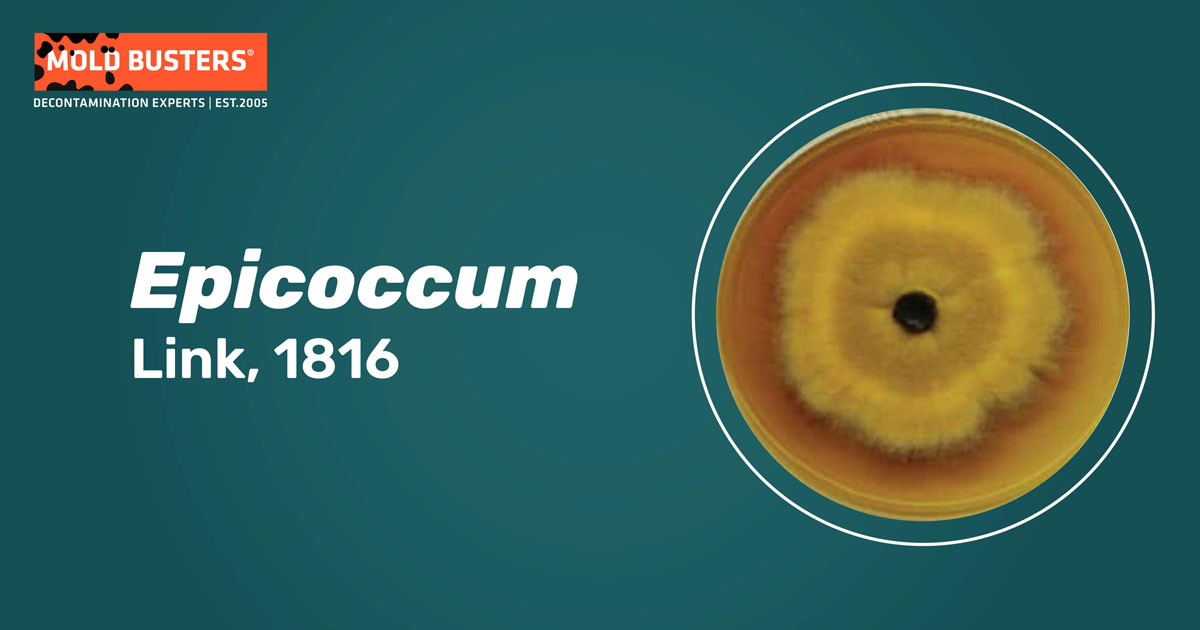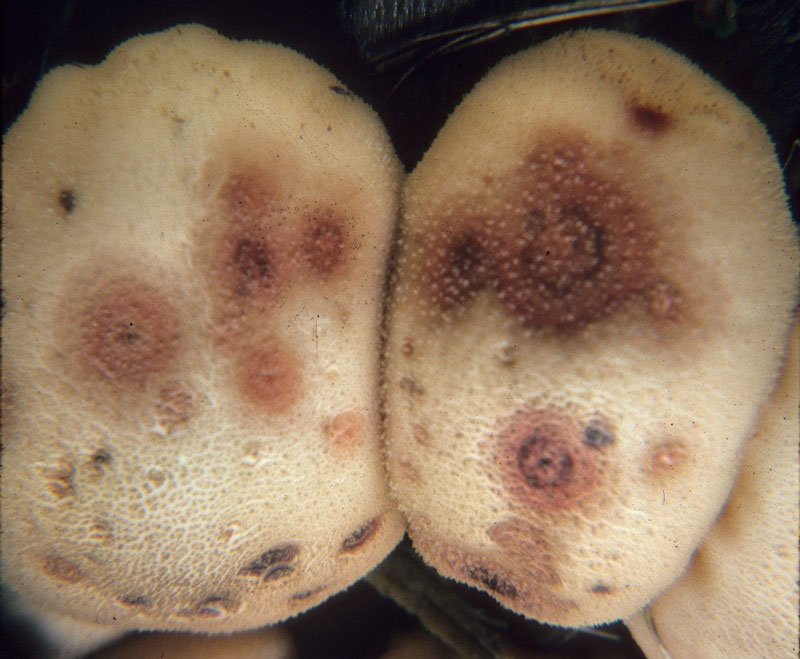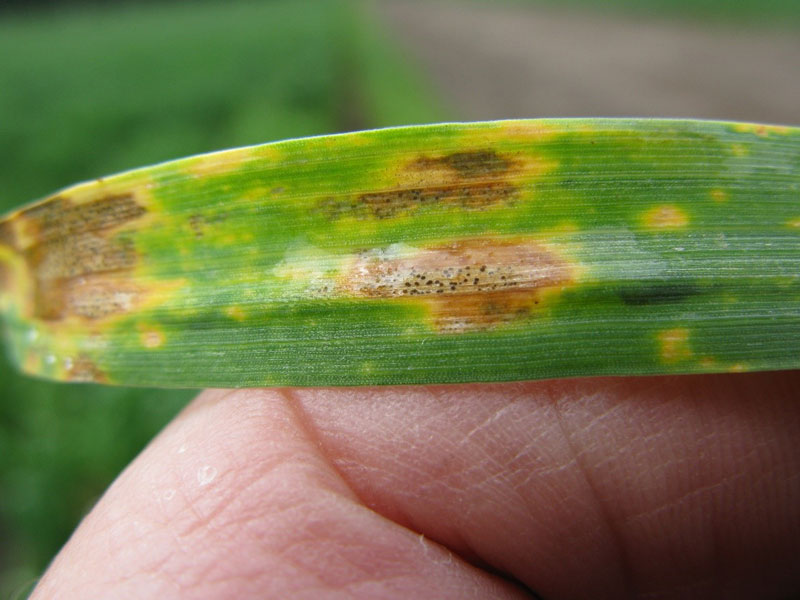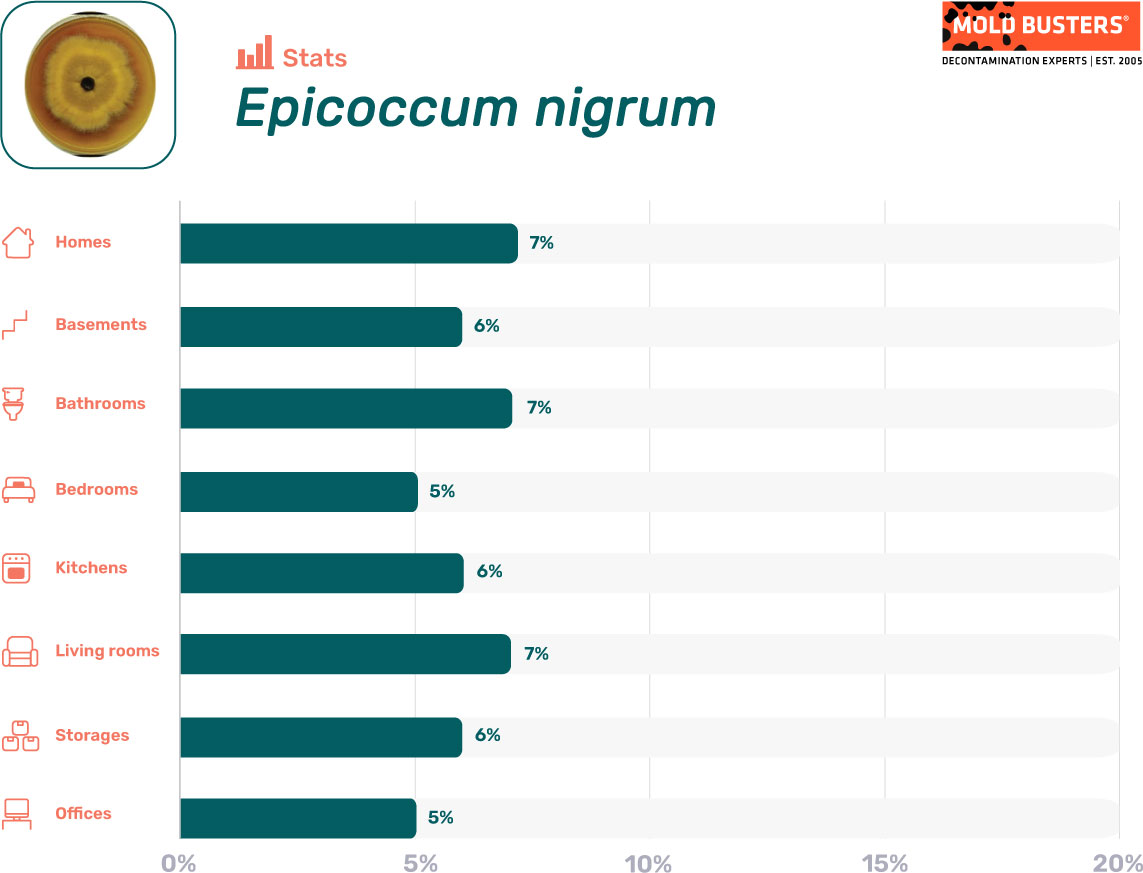Link, 1816
What is Epicoccum?
Epicoccum is a genus of filamentous ascomycetes which can mostly be found dissolving and recycling senescent plants tissue. These fungi can also live as plant endophytes, meaning they inhabit various plant parts without causing an infection. However, certain Epicoccum can be plant parasites or parasitize other fungi (mycoparasitism) [1].
They have a worldwide distribution and can grow between -3°C and 45°C (26–113°F), with optimum growth at 23–28°C (73–82°F). Epicoccum spp. are notable for the wide array of secondary metabolites it produces, making it valuable to humans from the aspect of biomedicine, industry, and agriculture [2]. It is a common allergen but rarely causes systemic diseases in humans [3].
Epicoccum is a genus of saprophytic mold that occur worldwide. They are able to grow between -3°C and 45°C, with optimum growth at 23-28°C and are known to colonize a wide variety of environmental settings [1]. Epicoccum is notable for the wide array of secondary metabolites it produces, making it valuable to humans from the aspect of biomedicine, industry and agriculture [2]. It is a common allergen but rarely causes systemic diseases in humans [3].

Epicoccum species
Epicoccum is a small genus containing only a small number of species. It was considered that Epicoccum is a monotypic genus containing only E. nigrum (synonym E. purpurascens); however, today, around 60 species are recognized. The confusion stems from the fact that E. nigrum (Fig. 1) is highly genetically variable and possesses many distinct morphological and physiological varieties [5,6]. From these, 18 species are recognized as phytopathogens to 46 plant species [13].

Where can Epicoccum be found?
Epicoccum can colonize an extremely wide variety of substrates. It lives in soil and is often associated with aging or decaying plant material. It is also a phytopathogen or an endophyte (Fig. 2). It is an agent of food spoilage and has been known to develop on apples, cantaloupes, fresh vegetables, nuts and cereals, rice, wheat, maize, pecans, peanuts, cashews, soybean, and frozen or cured meats [7]. Epicoccum can also colonize freshwater and marine environments and has been isolated from sediment, sponges, algae, and other sea plants [8].

Indoors, Epicoccum can occur on many water-damaged materials, such as gypsum boards, floors, wood, paper, and textiles. It has also been isolated from carpet and mattress dust, as well as from house plants.
Epicoccum is considered to be a secondary colonizer, meaning it often only appears after another mold has already contaminated the substrate [1]. Studies have found that Epicoccum spp. contaminating filters of hospital air-conditioning systems, and one study even confirmed its presence in 3 out of 7 hospitals observed [9].
Epicoccum mold statistics
As part of the data analysis presented inside our mold statistics resource page, we have calculated how often mold spore types appear in different parts of the indoor environment when mold levels are elevated. Below are the stats for Epicoccum:


Epicoccum and biotechnology
Many species of fungi produce compounds known as secondary metabolites. They are termed “secondary” as they are not required for any primary functions, such as survival, growth, or reproduction [14].
Epicoccum spp. produce many structurally diverse secondary metabolites. A number of these compounds have promising biological activities, including antibiotic, antimicrobial, antifungal, anticancer, and HIV inhibiting activities. Also, some can act as pigments and have been considered natural replacements for artificial pigments currently used in food. Epicoccum is also used in the process of biosynthesis of silver and gold nanoparticles [2].
Epicoccum is also used in agriculture for the control of fungal plant pathogens. E. nigrum has been used as a biological control agent against Monilinia spp. in peaches and nectarines against Sclerotinia sclerotiorum in sunflowers and against Pythium in cotton [4].
Epicoccum allergy
Epicoccum spores are ubiquitous in the air around us, both in indoor and outdoor environments. It is thought that humans inhale thousands of fungal spores every day.
For most people, this is a normal occurrence and doesn’t lead to any obvious symptoms. However, people sensitive to airborne allergens or those who already suffer from a pulmonary disease such as asthma, cystic fibrosis, or tuberculosis can show a reaction to fungal spores. In any case, indoor mold colonies release spores into the air when they mature. Prolonged exposure to an increased concentration of spores increases the risk of developing an allergic reaction, regardless of sensitivity or predisposition [15].
Epicoccum spp. is considered as one of the most important fungal allergens. They are responsible for inducing several respiratory disorders, such as upper and lower respiratory tract disease, rhinitis, sinusitis, and asthma. Elevated concentrations of Epicoccum spores may induce or worsen asthma attacks in children [1]. Epicoccum spores have been reported to cause severe allergic disorders, including hypersensitivity pneumonitis and allergic fungal sinusitis in 5-7% of different populations worldwide [3].
Adverse health effects of Epicoccum
Aside from allergic reactions, Epicoccum is not a significant genus of fungi in the context of human health. It is regarded as non-infectious, and even when it is isolated from clinical samples, it is presumed to be a contaminant [1]. However, there are several reports of systemic Epicoccum infections in immunocompromised patients – including one intramuscular infection [10] and fatal blood-borne infection in a severely immunosuppressed hematopoietic stem cell transplant recipient [11].
References
- D’Halewyn M, Chevalier P (2019). Epicoccum purpurascens. Retrieved from inspq.qc.ca.
- Elkhateeb WA, Daba GM (2019). Epicoccum Species as Potent Factories for the Production of Compounds of Industrial, Medical, and Biological Control Applications. Biomed J Sci & Tech Res. 14(3).
- Flannigan B, Samson RA, Miller JD (2011). Microorganisms in home and indoor work environments: diversity, health impacts, investigation and control. CRC Press. Boca Raton, FL. pp. 147-182.
- Fávaro LC, de Melo FL, Aguilar-Vildoso CI, Araújo WL (2011). Polyphasic analysis of intraspecific diversity in Epicoccum nigrum warrants reclassification into separate species. PLoS One. 6(8):e14828.
- Mycoses Study Group (2019). Epicoccum. Retrieved from drfungus.org.
- Jayasiri SC, Hyde KD, Jones EBG, Jeewon R, Ariyawansa HA, Bhat JD, Camporesi E, Kang JC (2017). Taxonomy and multigene phylogenetic evaluation of novel species in Boeremia and Epicoccum with new records of Ascochyta and Didymella (Didymellaceae). Mycosphere. 8(8): 1080–1101.
- Pitt JI, Hocking AD (2009). Fungi and food spoilage. Springer, New York. pp. 88-89.
- Ahumada-Rudolph R, Novoa V, Becerra J (2018). Morphological response to salinity, temperature, and pH changes by marine fungus Epicoccum nigrum. Environ Monit Assess. 191(1):35.
- Simmons RB, Price DL, Noble JA, Crow SA, Ahearn DG (1997). Fungal colonization of air filters from hospitals. Am Ind Hyg Assoc J. 58(12):900-904.
- Suraiya S, Azira N (2010). PP-067 Intramuscular Epicoccum nigrum infection in an immunocompromised patient: A case report. International Journal of Infectious Diseases. 14:S45-S46.
- Safdar A, Singhal S, Mehta J (2004). Clinical significance of non-Candida fungal blood isolation in patients undergoing high-risk allogeneic hematopoietic stem cell transplantation (1993-2001). Cancer. 100(11):2456-2461.
- Epicoccum featured image, Retrieved from Researchgate.net
- Taguiam, J. D., Evallo, E., & Balendres, M. A. (2021). Epicoccum species: ubiquitous plant pathogens and effective biological control agents. European Journal of Plant Pathology, 159(4), 713-725.
- Nielsen, K. F., Mogensen, J. M., Johansen, M., Larsen, T. O., & Frisvad, J. C. (2009). Review of secondary metabolites and mycotoxins from the Aspergillus niger group. Analytical and bioanalytical chemistry, 395(5), 1225-1242.
- Bozek, A., & Pyrkosz, K. (2017). Immunotherapy of mold allergy: a review. Human vaccines & immunotherapeutics, 13(10), 2397-2401.

Get Special Gift: Industry-Standard Mold Removal Guidelines
Download the industry-standard guidelines that Mold Busters use in their own mold removal services, including news, tips and special offers:

Written by:
John Ward
Account Executive
Mold Busters
Edited by:
Dusan Sadikovic
Mycologist – MSc, PhD
Mold Busters
